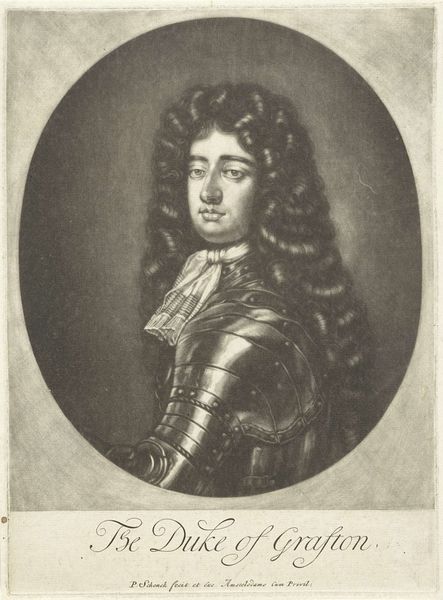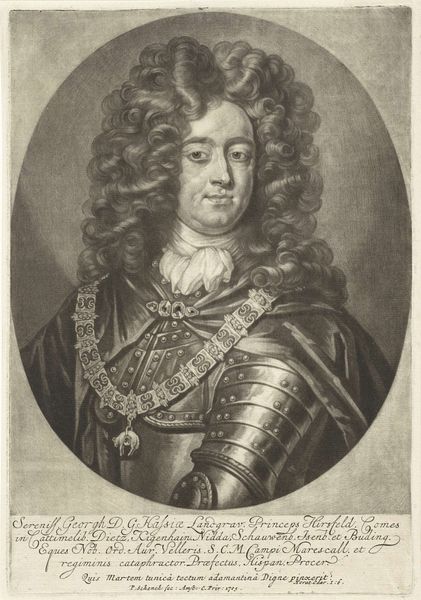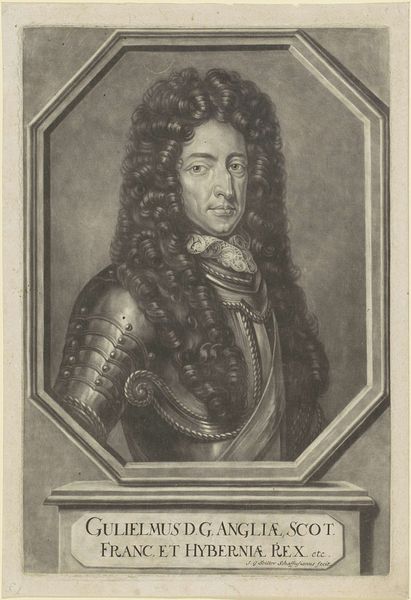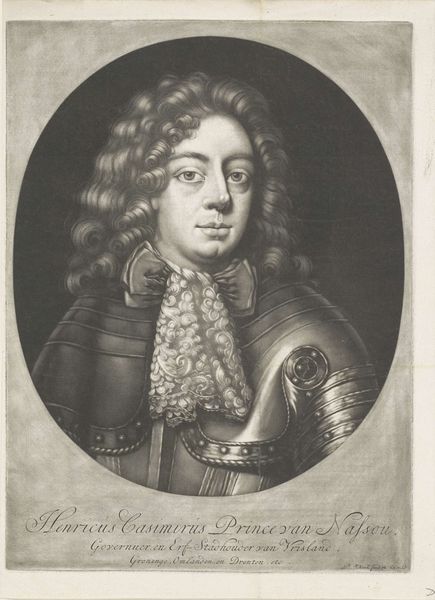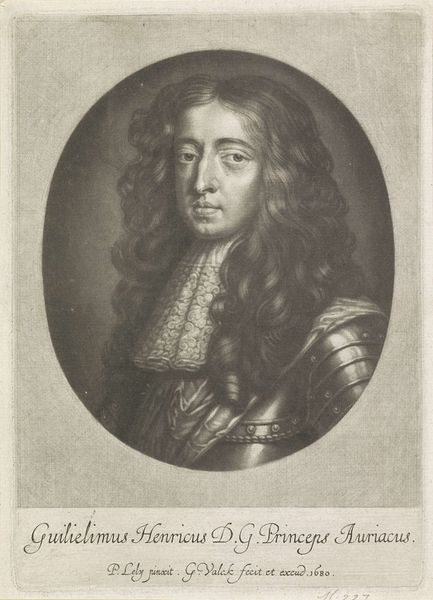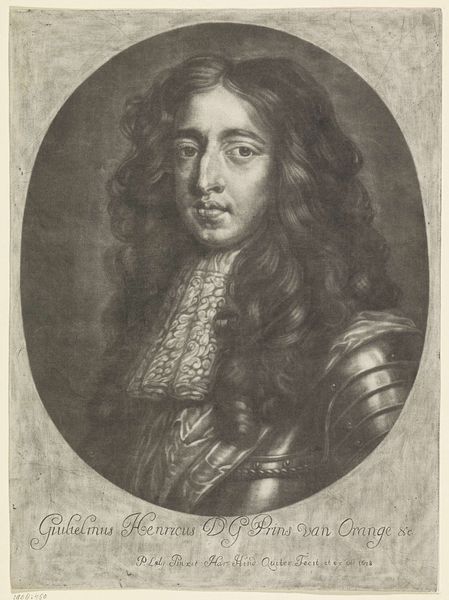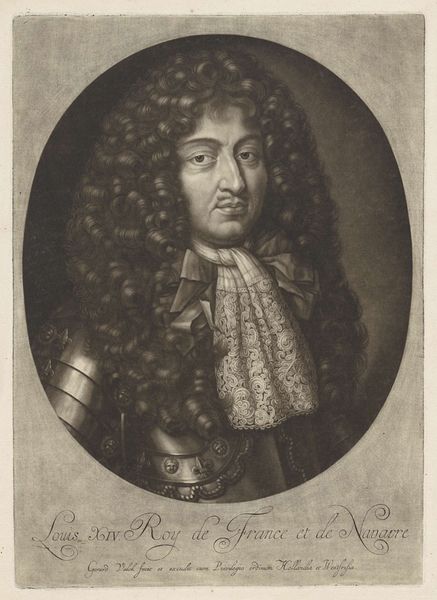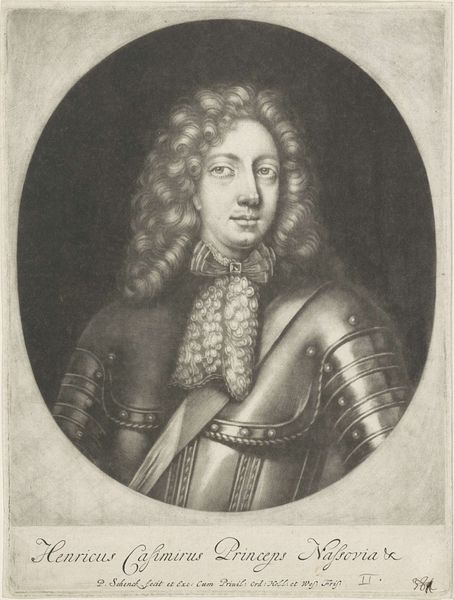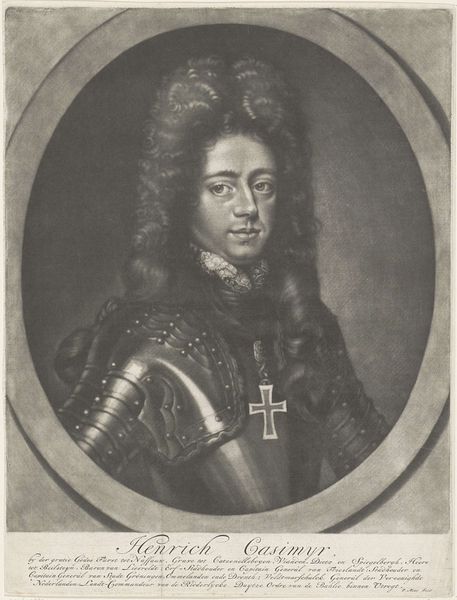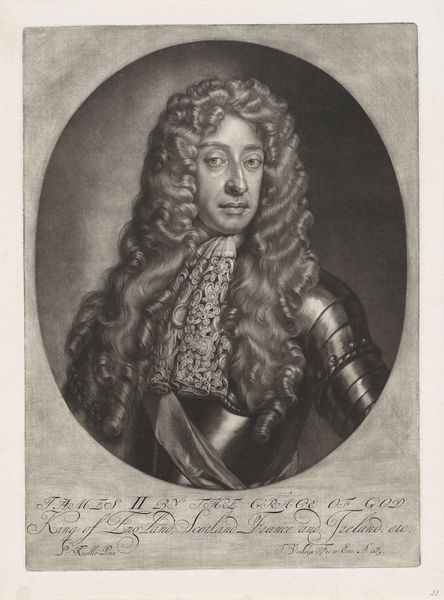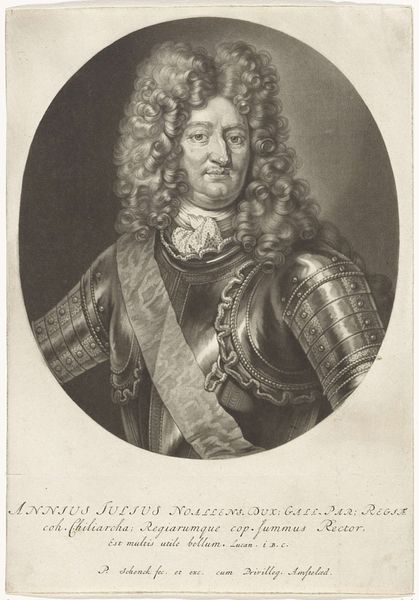
engraving
#
portrait
#
baroque
#
pencil sketch
#
charcoal drawing
#
portrait reference
#
pencil drawing
#
portrait drawing
#
history-painting
#
engraving
Dimensions: height 336 mm, width 247 mm
Copyright: Rijks Museum: Open Domain
Editor: Here we have "Portret van Hendrik Casimir II, graaf van Nassau-Dietz," created sometime between 1675 and 1711 by Pieter Schenk. It’s an engraving and has a formal almost stoic feel about it, don’t you think? What do you see in this piece? Curator: It is very baroque in its detail, isn’t it? What grabs me is how Schenk uses the engraving to capture both the regal authority *and* a certain human vulnerability. The armour speaks volumes, doesn't it? This wasn't just some fashionable attire, but a signifier. Are we talking protection or domination, here? I wonder, what does all that symbolic weight do to a portrait? Is it hiding, or revealing something? Editor: That's a really interesting point – the weight of expectation, almost! Is the sitter hiding or are they trying to tell us a story with these signifiers? I hadn't considered that before. Curator: Exactly! Portraits of nobility aren’t ever "just" portraits; they are incredibly considered, aren't they? I see it as less objective representation, and more performance of status… the person AND the role. And that’s something that still rings true, doesn't it, when we encounter political figures today! Editor: It really does. Looking at the armor now, it strikes me as performative in a modern sense, something carefully curated to tell the story of power, much like images politicians craft today. Curator: It’s interesting how little changes really. Next time we look at a portrait, old or new, let’s ask: What stories are *they* telling? Editor: Definitely! That’s a lens I'll be using from now on.
Comments
No comments
Be the first to comment and join the conversation on the ultimate creative platform.
